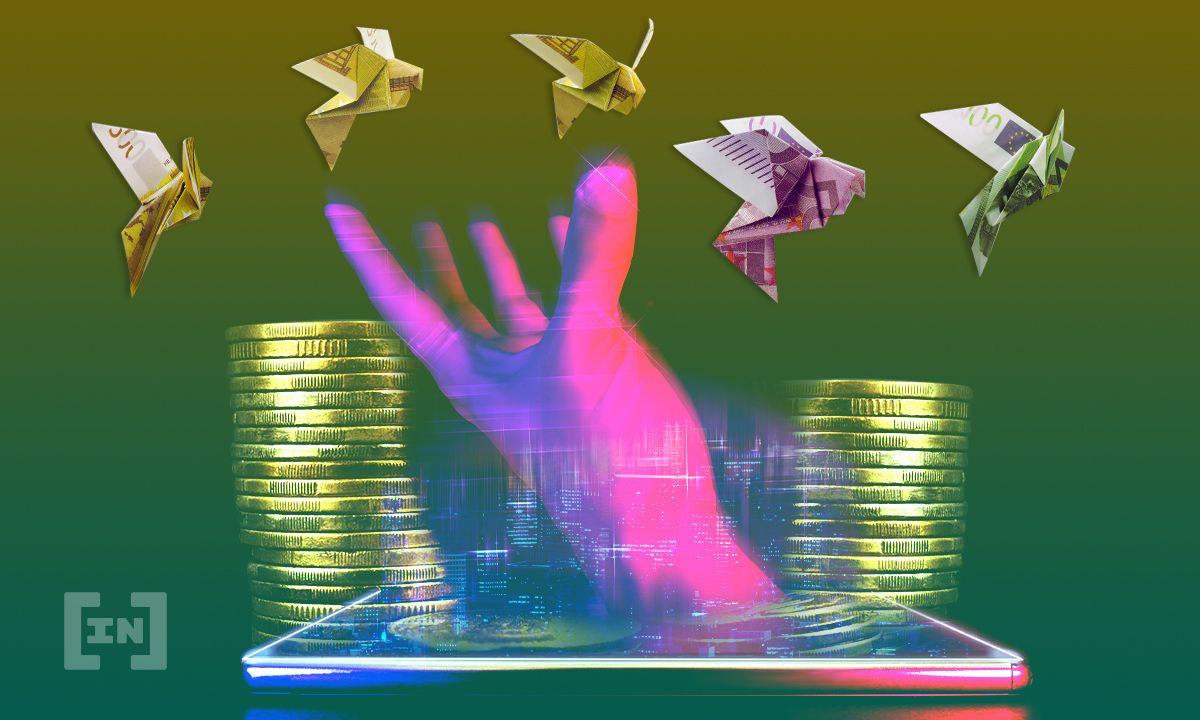Non-fungible tokens (NFTs) have cemented themselves as a fundamental part of the crypto world. These building blocks of the metaverse are everywhere, often at incredibly high prices.
Every human should be able to participate in the metaverse. However, if you’re looking at the current NFT landscape, it seems only those with impressive stacks will be able to afford it.
From the record-breaking sales of expensive NFT pfps (profile pictures for those who don’t exclusively live on Twitter) to luxury brands setting themselves up in the space, big-ticket items appear to be taking precedence over affordability.
NFT inventor concerned with over-capitalization
In May 2014, two artists Kevin McCoy and Anil Dash, conceptualized what became known as NFTs. They wanted a new technology that could protect artists’ work by integrating the blockchain as a means of claiming ownership of their digital work to prevent unauthorized copying.
In jest, they named it monetized graphics. The idea wasn’t very popular and had little to no traction in the subsequent years.
For Dash, the current multimillion-dollar NFT market is astounding. In an interview with The Atlantic, he discusses how the boom has shifted some interest away from the art itself to the asset.
“Head-spinning prices are now being paid for artworks that, just a few months ago, would have been mere curiosities,” said Anil Dash.
He explains that those who are buying the artworks are collecting them for the investment value. As such, the appreciation for the artwork itself is not what’s bringing them to the table.
While this is beneficial for both the collector and the artists, it has led to a concentration of outrageously expensive digital assets. These appear out of reach to a novice art collector once a specific collection blows up online.
Scarcity, valuation, popularity
A few reasons for these incredible prices are the scarcity introduced by token limits, a lack of valuation, and the popularity of certain art communities.
“Nobody really knows how to price NFT art. But it is tricky with all kinds of art – it has to be special, revolutionary, influencing the emotions of the audience or difficult to create in certain circumstances,” says said Jindrich Karasek, a unique NFT artist and cyber threat researcher at Trend Micro.
The lack of valuation is fair. Currently, artists price their artwork on platforms. If it’s set as a bid, this can push the price up exponentially on popularity alone.
There are some who are trying to bring accredited value into the space. For example, Upshot is aiming to launch a platform that crowdsourced expert valuations to help truly connect values to NFTs.
Not everyone is Beeple
However, while it is the Beeple-level sales that make the headlines, the NFT art community is broad. It’s these big-name sales that grab attention but also overshadow the other work happening in the space.
“I know of many wonderful artists with very low-priced artwork, said Daniella Attfield, the lead crypto artist for GrailNFTproject. She explained from her experience that it’s actually not always about the money.
“Also, most of the collectors who I have engaged with directly buy art because they love it and not to turn a profit. Their mindset seems to be, ‘This is a piece I think is beautiful. If it’s worth more later then, that’s wonderful, but if it isn’t that’s also okay. It’s an artwork I’d be happy to keep, and I wouldn’t have bought it otherwise,'” she says.
Barriers to entry
While there is interest, aspiring NFT artists also have to contend with other barriers to entry. Specifically, high gas fees. These, unfortunately, drill a hole in their earnings whenever a transaction is made.
“At the moment, with gas fees being so high, I think this is definitely negativity affecting the community. Especially if they are just starting out and haven’t got huge amounts of Ethereum yet,” says Attfield.
“I think having a large following allows for people to raise their prices more easily because they have a larger audience who may want to buy their artwork. That’s not the only factor, though,” she says.
Growing demand
What has been apparent in the NFT boom, is the rise in demand for emerging art forms. For example, 3D art has attracted a large fan base.
Consequently, artwork like these can be priced higher because the demand is greater. The platforms themselves actually advise artists not to accept low bids and encourage them to wait it out until the bid increases.
Regardless of internet fame or otherwise, Attfield explains that in her experience, the community is a very supportive space, and those that are buying art really do love and appreciate it.
In a nutshell, this is what Kevin McCoy and Anil Dash imagined when they invented the NFT. Artists have found a safe haven to protect the scarcity of their original works. Alongside a network within the industry and the market itself.
Building the metaverse
Beyond individual pieces of art, NFTs serve a bigger purpose. They are considered the building blocks of the metaverse.
This virtual space, also referred to as Web 3.0, is an integrated internet experience that removes the traditional way of doing pretty much everything users have come to know and expect from the internet.
Instead of looking at the internet on your device’s screen, users will be able to interact within it, like a virtual construct. Its goal is to supplant the old way of doing things and essentially merge virtual life with real life.
“With the whole metaverse idea, I’m looking forward to finding out if they will ‘just’ create a virtual world, or if they will actually manage to break out from the boundaries of our minds, given to us during the evolution of mankind. To bring on new concepts of existence, citizenship, employment, education, space and time,” says Karasek.
An extended, repackaged idea
However, this concept of a “metaverse” certainly isn’t new. Massive multiplayer online (MMO) games have existed for years as microcosms of the metaverse concept.
Many online games allow players to create unique characters and freely design digital clothing and jewelry for their avatars. Certain aspects of the design mechanics can also be purchased with real money that’s converted into in-game tokens or earned as in-game rewards.
When the above description of MMO gaming is incorporated with the online arena of decentralized finance (DeFi) in an elaborate fusion of blockchain technology, it can provoke the imagination to think of jacking into the Matrix.
“Imagine new virtual equipment, clothing, collectibles, digital furniture for the new virtual homes & offices,” says Karasek.
He explains how NFTs allow artists to clearly establish authorship as well as ownership of digital content and monetize it.
“Now it is our turn to possibly rethink the whole concept of digital ownership – what does it actually mean to own something we cannot touch, take offline or leave as our inheritance,” he says.
We will decide our future
The cost, accessibility, and expansion of the metaverse and NFTs will depend on us. Overall, those who are creating, those who are building, and those who are buying will influence its ultimate structure.
Whether it is a replication of the Web2.0 world or a more accessible, fairer one is still to be seen. However, the NFT art boom has shown that there are communities wanting to make space for everyone.
Disclaimer
Following the Trust Project guidelines, this feature article presents opinions and perspectives from industry experts or individuals. BeInCrypto is dedicated to transparent reporting, but the views expressed in this article do not necessarily reflect those of BeInCrypto or its staff. Readers should verify information independently and consult with a professional before making decisions based on this content. Please note that our Terms and Conditions, Privacy Policy, and Disclaimers have been updated.


